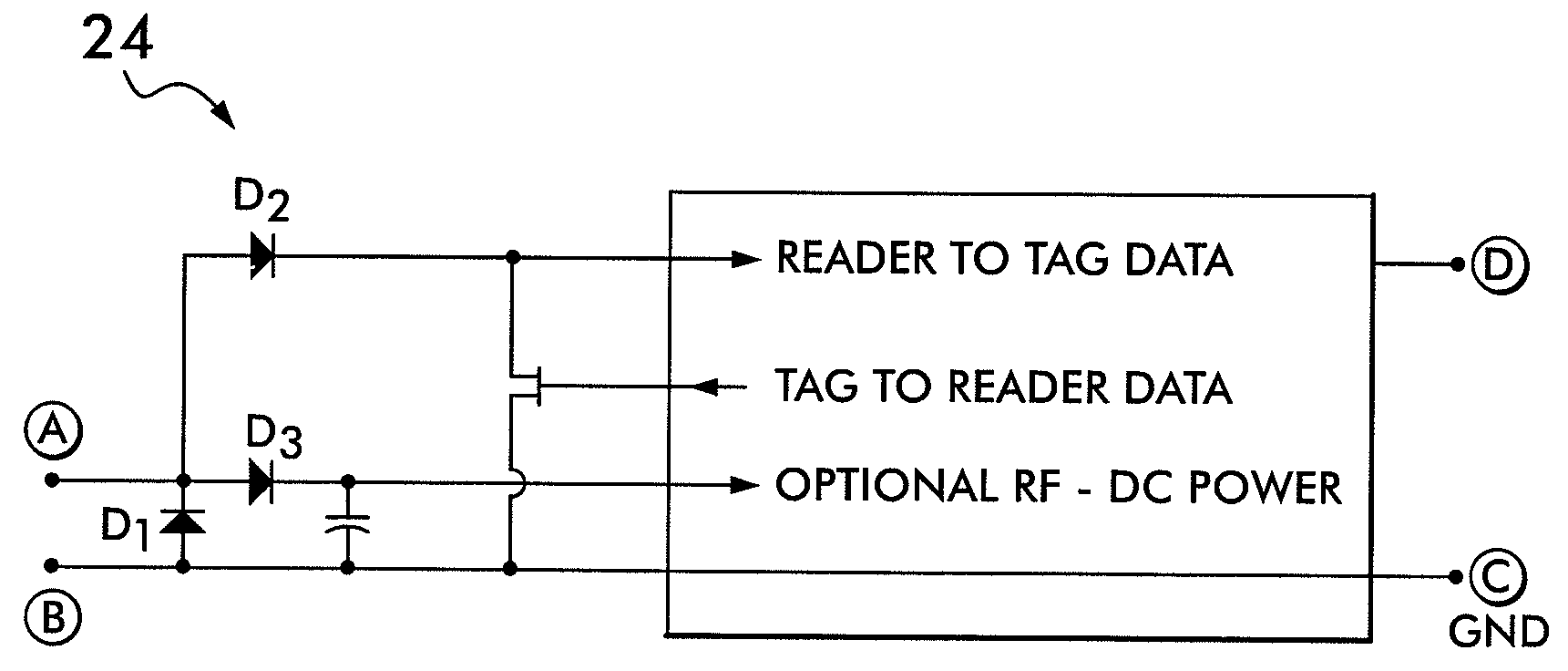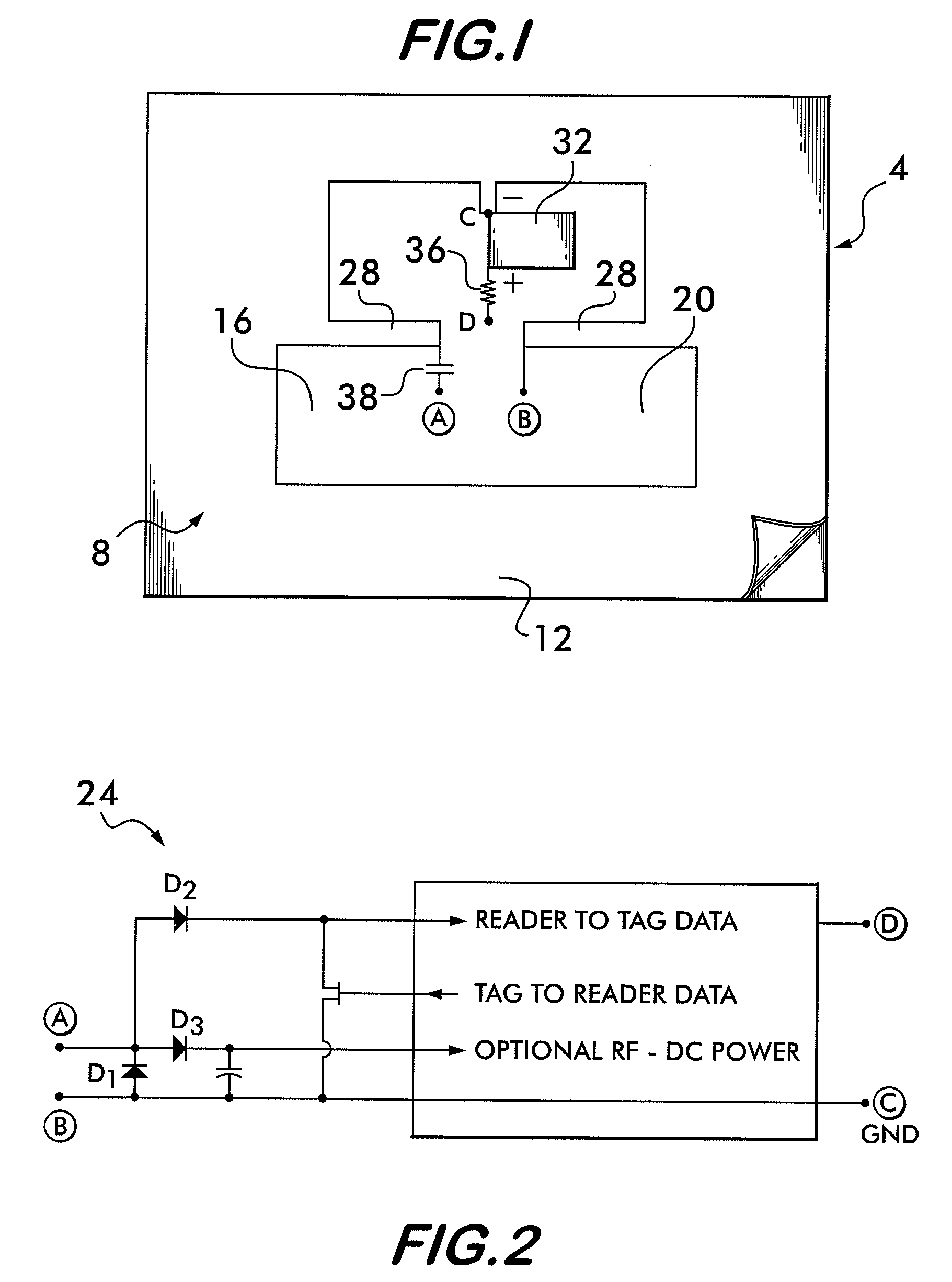Light Activated RFID Tag
a technology of light-activated rfid tags and tags, which is applied in the field of rfid tags, can solve the problems that the older technology solar cells using glass substrates are not attractive to use in conjunction with such “sticker” tags
- Summary
- Abstract
- Description
- Claims
- Application Information
AI Technical Summary
Benefits of technology
Problems solved by technology
Method used
Image
Examples
Embodiment Construction
[0032]The RFID tag of the present invention is constructed using an electronic circuit, an antenna element, and a power source. Under the preferred embodiment, the electronic circuit is a single CMOS integrated circuit; the power source is a photovoltaic cell; and, the antenna element is constructed using all or part of the photovoltaic cell. Alternatively, the antenna element may be discrete and separate from the photovoltaic cell. The preferred embodiment uses a flexible solar cell, typically using amorphous silicon on a plastic substrate, made on a roll-to-roll process to increase manufacturing capacity and reduce cost.
[0033]Solar radiation intensity in direct sunlight is about 1000 watts per square meter at the surface of the earth. The DC power requirements of an RFID chip may be as high as 100 microwatts for some operations such as writing EEPROM data. Thus, with full solar illumination, only a very small collection area is needed even with consideration of the limited efficie...
PUM
 Login to View More
Login to View More Abstract
Description
Claims
Application Information
 Login to View More
Login to View More - R&D
- Intellectual Property
- Life Sciences
- Materials
- Tech Scout
- Unparalleled Data Quality
- Higher Quality Content
- 60% Fewer Hallucinations
Browse by: Latest US Patents, China's latest patents, Technical Efficacy Thesaurus, Application Domain, Technology Topic, Popular Technical Reports.
© 2025 PatSnap. All rights reserved.Legal|Privacy policy|Modern Slavery Act Transparency Statement|Sitemap|About US| Contact US: help@patsnap.com



